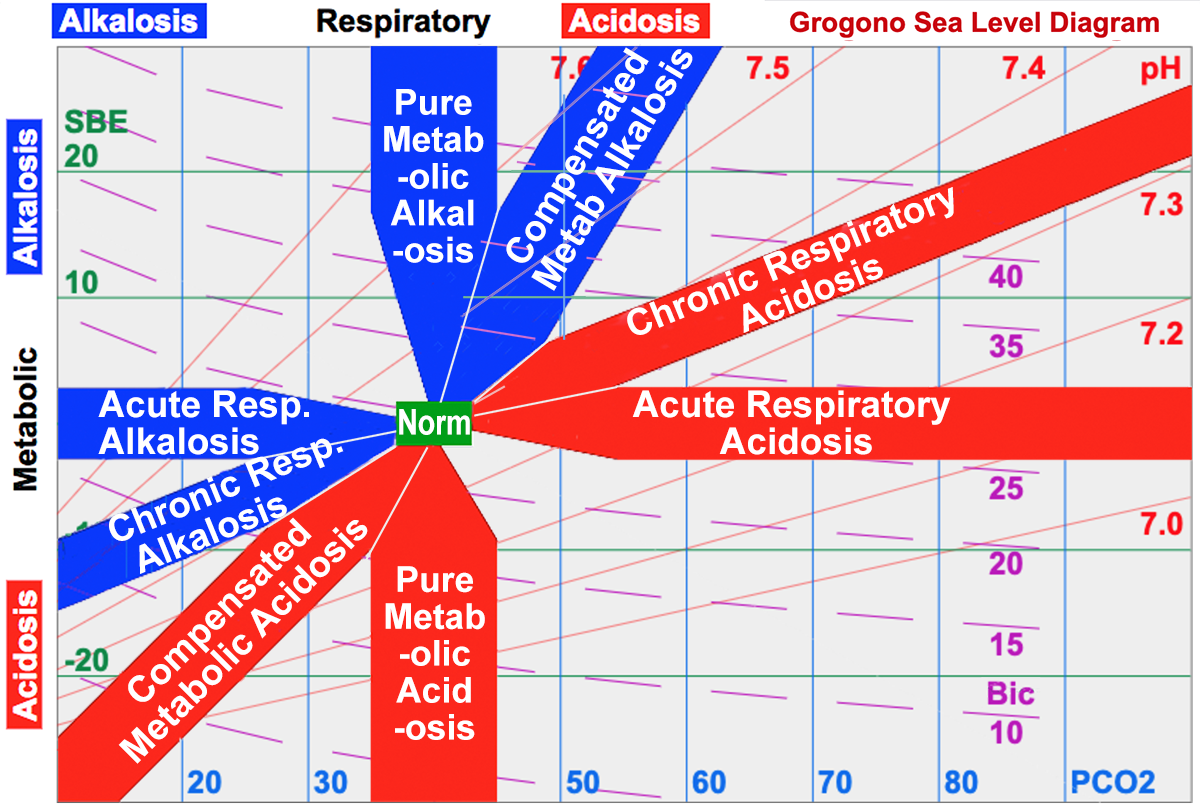The Overview of Acid-Base Balance
Respiratory: We breath to eliminate CO2. When breathing is inadequate carbon dioxide level rises. The extra CO2 molecules combine with water to form carbonic (respiratory) acid which contributes to an acid pH. The treatment, if all else fails, is to ventilate the patient to lower the PCO2.
Metabolic: Normal metabolism produces relatively little acid but when impaired acid accumulates. For example, a poor blood supply stops oxidative metabolism and lactic acid forms. By definition, because it’s not respiratory, lactic acid is “metabolic.” If critical the patient may require treatment using bicarbonate to neutralize this acid, possibly other intervention, and sometimes just time for excretion or metabolism.
Overview: The above eight sentences cover the whole of acid-base balance. As you explore this site, keep this overview in mind. Acute clinical problems usually result in acidosis which explains the emphasis.
